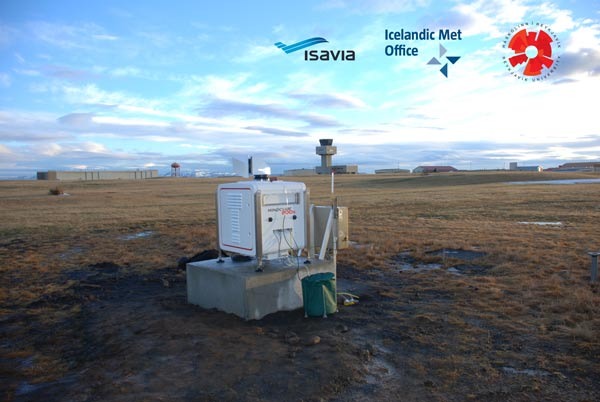Joint research project between Reykjavik University, Icelandic Meteorological Office and ISAVIA aims to enhance aviation safety in Iceland
Scientists at Reykjavik University, the Icelandic Meteorological Office and ISAVIA Ltd. the Icelandic Air Navigation Service Provider have set up a joint research project to improve monitoring of weather phenomena in Iceland. The objective is to enhance airport safety at Keflavík airport, in particular in connection with potential volcanic eruptions in Iceland, by implementing the use of scanning Doppler Lidar observations as a part of the meteorological observational system.

Doppler Lidar is a remote sensing technology that detects suspended particles in the atmosphere and assesses their optical properties by illuminating them with pulses of light from a laser and retrieving the backscattered light. Combined with conventional weather observations the Lidar data provide complementary information about state of the lowest part of the troposphere, up to 6-8 km. Lidar systems are increasingly used in aviation to monitor the airspace above airports, especially the occurrence of turbulence, wind shear, fog advection and airborne dust, including volcanic ash particles.
The project foresees tight collaboration with Icelandic and European partners to exchange knowledge on Lidar technology.
Expected outcomes of the research project are:
- Improved understanding of turbulence and wind shear over the airfield, especially in the most severe circumstances.
- Identification of the difference in depolarization between aerosols from different sources, with special emphasizes on properties of the soil, sand and ash particles.
- Improved understanding of the boundary layer signature of the different type of air masses, e.g. onshore or offshore winds.
Outputs from the project will be published in peer-reviewed journals.
The project is led by Dr. David Finger, Asst. Professor, School of Science and Engineering, Reykjavik University (RU). It is co-supervised by Dr. Guðrún Nína Petersen, Icelandic Meteorological Office. Advisors on the project are Dr. Sibylle von Löwis of Menar, Icelandic Meteorological Office and Karl Pálsson, at ISAVIA.

